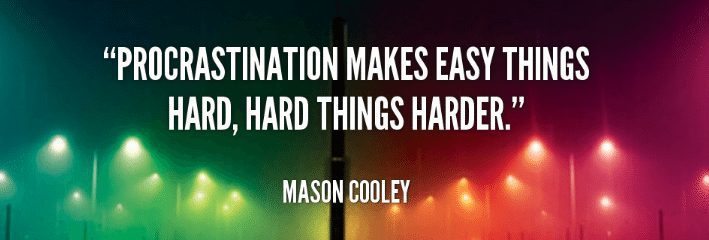How Understanding Implicit Bias Helps Build Self-Awareness
The human brain is a truly fascinating thing, and one thing it does for us is help “group” things and create shortcuts so we can process all the sensory information we encounter on a given day.
Our brains do this on a subconscious level with no input from our conscious decisions.
It is done through years of observation, information, and learned behaviors.
This can be helpful in situations where we have to make a quick decision, but it can also hinder us in life by creating implicit biases.
The implicit biases that people have can affect not just their own lives, but the lives of others as well.
What exactly is an implicit bias, and why does it matter if we have it?
How does it impact our lives and even our relationships?
Is there anything you can do about an implicit bias once you notice it?
These are all excellent questions and a splendid start in becoming more self-aware while diminishing the negative effects of an undetected implicit bias.
What is implicit bias?
According to the Perception Institute, implicit bias is defined as, “Thoughts and feelings are ‘implicit’ if we are unaware of them or mistaken about their nature.
We have a bias when, rather than being neutral, we have a preference for (or aversion to) a person or group of people.”
The term, implicit bias, is used to describe our attitudes towards distinct groups of people or associate stereotypes with them without our conscious knowledge.
There are many examples of implicit bias in our world, and it affects a variety of different situations.
For example, a manager with an implicit bias against overweight people might hire a less qualified candidate because of their implicit bias.
A person walking alone on the street might perceive danger when a black man walks past them, but not have the same visceral reaction were a white man to walk by.
There are many implicit biases a person might have.
In fact, Project Implicit has 14 different tests you can take:
- Sexuality (‘Gay—Straight’ IAT)
- Age (‘Young—Old’ IAT)
- Weight (‘Fat—Thin’ IAT)
- Gender—Career
- Disability (‘Disabled—Abled’ IAT)
- Religion (‘Religions’ IAT)
- Presidents (‘Presidential Popularity’ IAT)
- Race (‘Black—White’ IAT)
- Gender—Science
- Transgender (‘Transgender People—Cisgender People’ IAT)
- Weapons (‘Weapons—Harmless Objects’ IAT)
- Asian American (‘Asian—European American’ IAT)
- Skin-tone (‘Light Skin—Dark Skin’ IAT)
- Arab-Muslim (‘Arab Muslim—Other People’ IAT)
In order to be an implicit bias, the bias must be unconscious and automatic, meaning you have no intention or control.
They are also pervasive, meaning we all have them, even if they don’t align with our beliefs.
They influence our behavior in real-life situations, like work and relationships.
These biases are also malleable, meaning that you can unlearn and replace existing mental images with new mental associations.
Basically, they happen because your brain is always looking for shortcuts to process information.
“The IAT [Implicit Association Test] measures something else.
It measures our second level of attitude, our racial attitude on an unconscious level – the immediate, automatic associations that tumble out before we’ve even had time to think.
We don’t deliberately choose our unconscious attitudes.
And… we may not even be aware of them. The giant computer that is our unconscious silently crunches all the data it can from the experiences we’ve had, the people we’ve met, the lessons we’ve learned, the books we’ve read, the movies we’ve seen, and so on, and it forms an opinion.” ― Malcolm Gladwell, Blink: The Power of Thinking Without Thinking
Why does being aware of your implicit biases matter?
Implicit biases can affect our work, life, and relationship decisions, without us being consciously aware of why we do certain things we do.
Noticing yours, while keeping an open mind to the results, can help you become more self-aware.
The Perception Institute points out that, “The mind sciences have found that most of our actions occur without our conscious thoughts, allowing us to function in our extraordinarily complex world.
This means, however, that our implicit biases often predict how we’ll behave more accurately than our conscious values.”
What that really means is that the values you believe don’t always measure up to your unconscious responses.
Being aware of your implicit biases will help you become the person you are trying to be, by helping you notice, and become more aware of your responses.
This is especially important if you hire people or are in a job that makes decisions about other people.
This could be law enforcement, college admissions, real estate, or even the medical field, just to name a few.
When people in positions like this have an undetected implicit bias, they are simultaneously providing one group with an advantage while disadvantaging others. “Life is one big prejudice unless you question everything.” ― Abhijit Naskar, Neden Türk: The Gospel of Secularism
How does it affect our relationships?
A person’s implicit bias affects the type of people we spend time with, including our friends and potential romantic partners.
Think about your friend group for a moment.
Is it a diverse mash-up of genders, races, and sexual orientations or are your closest friends of similar traits (not personality traits, but physical ones).
When we let our implicit biases narrow the field of people we associate with, we are missing out on other perspectives and viewpoints that could enrich our lives.
We can say the same about romantic partners.
There might be a perfect person out there for you, but your implicit bias could hold you back from interacting with them.
If you are already in a relationship, realizing your implicit biases might also improve “if we are aware of our biological tendencies and are motivated to reduce the negative impact of these tendencies,” according to Psychology Today.
“A human mind that has a hold over its prejudices is like the fabled philosopher’s stone, everything it touches turns to gold, whereas a savage mind which is run by its prejudices is like an infectious disease, wherever it goes it causes death and destruction.” ― Abhijit Naskar, The Shape of A Human: Our America Their America
What can we do to change our implicit biases?
Being more aware of ourselves is the first step to changing some of these learned behaviors that subconsciously influence our behavior.
Start by taking some of the implicit association tests, but be sure to keep an open mind!
One theory about the benefits of participating in an IAT, as explained by this research study “with the notion of self-perception (Bem, 1972) this perspective suggests that mere completion of an IAT even without feedback about one’s measurement scores may increase acknowledgment of bias to the extent that participants notice the behavioral effects of their attitudes in the task.”
Once you notice the behavioral effects of your attitudes, meditation, and other mindfulness practices can help your brain create new associations which are less influenced by any implicit bias.
This works because mindfulness practices increase the awareness of our emotions, thoughts, and surroundings while moving us toward a sense of acceptance and non-judgment.
Another reason that mindfulness can help overcome biases is that it allows us to pause and take a moment to see something in its full context.
Humans have a tendency to ignore circumstances and focus on outcomes (correspondence bias).
My husband gets angry every time he pulls up a gas pump and someone is in the first space, instead of pulling up the furthest space.
Yesterday, we went to the gas station, and he pulled into the space behind a truck and said, “this guy knows what you are supposed to do.
You see, you pull up so the next person can just pull in here.”
I nodded, and mumbled, “yeah,” while he went inside to pay for gas.
While he was in there, I watched the truck owner come out, pump his gas, and drive away.
My husband came out shortly after, pumped our gas, and got in the car.
He put the car in drive and immediately pulled forward where the truck had been.
He suddenly gets this look on his face and whips around to stare at me.
“Oh my God, I wonder how many people I have cursed out for being in that spot when they should have pulled up, but maybe they were just like us, just now!”
I laughed at him for a moment, while he went on about how maybe he was more of a jerk than he thought because this concept of someone being in the furthest spot and then pulling away had honestly never occurred to him.
Mindfulness will help you think about situations like this and question your surroundings, helping you see things through a different lens.
Everyone has these biases and being willing to explore them, even though you might not agree with the results because they can conflict with what you believe to be true, can take some courage.
Be brave and learn more about yourself and maybe why you do certain things you do.
Becoming more self-aware helps us be better, happier, and more empathic people.
I think most of us want that, and this can be a simple way we solve the mystery of who we are while continuing to be the best version of ourselves.
Feel free to share your results and thoughts about the IAT you took in the comment section below.











